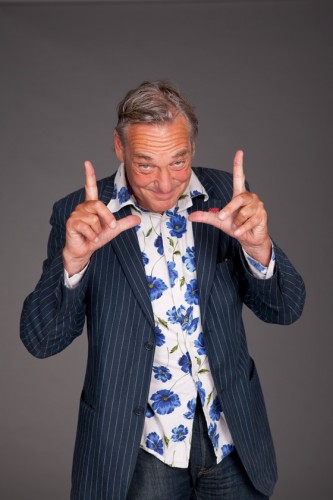How did you as an architect become a festival organizer?
In 1999 in Rotterdam we organized a symposium on the topic of the image of the city. We showed the obvious films, like Metropolis, Blade Runner and we found out that there was lot of interest in the topic. I toke my chance and the year after we organized a very small event with only architectural films. We had about 8 documentaries and feature films. Since then we have grown immensely into an organisation that shows more than hundred documentaries and feature films. We also keep a database with many films that help similar festivals in the programming. I helped many other festival to start, was involved with Budapest, after I went to Russia, I did a festival on film and architecture in Warsaw.
 Photo: Frank Hanswijk
Photo: Frank Hanswijk
Who is watching architecture films?
Everybody love films and everybody lives in a house makes use of the public space. Architecture and film are the most influential art forms of the 20st century and it will be of the next century and the combinations of both disciplines are very important.
You were educated both in architecture and film. Do you see some overlaps in the working methods of these professions?
JdH: The process for me is the same because in both disciplines there is structure and meaning expressed in a different way. Everybody is looking at architecture the way it expresses itself though aesthetics, the material, the space but there is a meaning, a storytelling too and if you know that second layer architecture becomes very interesting. When you start a project it helps when you can make use of that other layer. Like in the film it is never straightforward. There is always a tension, a conflict like in architecture. I am teaching in both disciplines too and you can see that architects become better architects if they know how to work with film. In architecture it is about space and in film it is about time. But when you combine both, the way architecture translates in time you can put emotions in architecture and you can add structure to film.
How you became involved with the Budapest Architecture Film Days?
JdH: I was invited because of a film and I liked your festival and the people. When I came you had this wonderful venue, people drinking and dancing and laughing and screaming and I said wow this is the place where I belong. What I liked about your festival that you did it without any money. But of course you don?t start a festival for money. Look at our festival, we bring people from all parts of the world and they want to tell and exchange ideas about what they are doing and the atmosphere is so important. I travel all over the world to meet people who are willing to work and have a goal in their thoughts. Otherwise life is boring. We are in the world to move ourselves and to be active. Of course it is always about love and it is always about good food and drinks and this is a topic that matters us all, everybody love films and everybody lives in a house makes use of the public space. Architecture and film are the most influential art forms of the 20st century and it will be of the next century and the combinations of both disciplines are very important.
Daniella Huszár and Noémi Soltész, 8 October, 2011.
